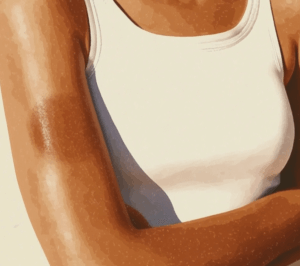As we navigate the intricate pathways of wellness and longevity, it’s essential to recognize the signals our bodies—and those of our loved ones—might be sending. This is especially true when it comes to our children. One condition that often flies under the radar is juvenile arthritis (JA), a chronic autoimmune disorder that affects young people. A telltale sign of JA is a rash, but how do you differentiate a juvenile arthritis rash from other common skin conditions? Today, I want to guide you through the nuances of this important topic.
Understanding Juvenile Arthritis and Its Rash
Juvenile arthritis is not a single disease but a term that encompasses several types of arthritis that affect children. Among these, systemic juvenile idiopathic arthritis (SJIA) is known to cause a distinctive rash. This rash is often elusive, appearing and disappearing without warning, making it easy to confuse with other skin issues.

Characteristics of a Juvenile Arthritis Rash
1. Salmon-Pink Color:
The rash associated with juvenile arthritis, particularly SJIA, often has a salmon-pink hue. It’s usually flat and non-itchy, distinguishing it from rashes caused by allergies or infections that tend to be raised or itchy.
2. Fleeting Nature:
One of the most perplexing aspects of a JA rash is its transient nature. It can appear suddenly and vanish just as quickly, often in a matter of hours. This can make it difficult to spot, especially if you’re not actively looking for it.
3. Accompanied by Fever:
The rash often appears in conjunction with a fever, typically spiking in the evening. This pattern—rash followed by a fever—is a red flag that sets juvenile arthritis apart from other conditions like eczema or heat rash, which don’t typically present with such systemic symptoms.
4. Location of the Rash:
Juvenile arthritis rashes commonly appear on the trunk, arms, and legs. Unlike rashes from contact dermatitis, which tend to be localized to the area of exposure, JA rashes are more likely to spread across broader areas of the body.
5. Non-Pruritic (Non-Itchy):
A key difference between a JA rash and other skin conditions is that it usually doesn’t cause itching. If your child has a rash that isn’t bothering them with the urge to scratch, but other symptoms like joint pain or fever are present, juvenile arthritis could be the cause.
Differentiating from Other Skin Conditions
1. Eczema:
Eczema is a chronic condition characterized by itchy, inflamed patches of skin. Unlike the smooth, salmon-pink rash of JA, eczema usually presents as red, scaly, and itchy patches. Eczema is often found in skin creases, like the insides of elbows and behind knees, whereas a JA rash has a broader distribution.
2. Heat Rash:
Heat rash, also known as prickly heat, occurs when sweat ducts become blocked and swell, leading to red, itchy bumps. It’s most common in hot, humid conditions and usually affects areas covered by clothing. The primary differentiator here is that heat rash is typically itchy and often resolves with cooling, while a JA rash is not itchy and follows the cyclical pattern of fever.
3. Allergic Reactions:
Allergic rashes, such as those caused by contact with irritants or foods, tend to be itchy and raised, often with a clear onset following exposure to the allergen. Juvenile arthritis rashes don’t follow this pattern—they appear without any obvious trigger and are accompanied by systemic symptoms like joint swelling or fever.
4. Viral Rashes:
Many viral infections in children cause rashes, but these are usually accompanied by other distinct symptoms like coughs, runny noses, or gastrointestinal issues. Viral rashes can be itchy and often have a different pattern, such as the “slapped cheek” appearance in fifth disease or the lacy rash of roseola. In contrast, a JA rash is more uniform and linked with joint symptoms.
When to Seek Medical Advice
If your child develops a rash along with other symptoms like joint pain, swelling, or unexplained fever, it’s important to consult a healthcare professional. Early diagnosis of juvenile arthritis can make a significant difference in the management of the disease and the long-term health of your child.

Listening to the Body’s Signals
As parents and caregivers, we have a vital role in observing and interpreting the subtle signs our children’s bodies might be giving us. While a rash might seem like a minor issue, when combined with other symptoms, it could be an important clue to a deeper health concern.
Let’s continue to educate ourselves and others on these nuances, so we can all live a life of awareness, wellness, and vitality.




